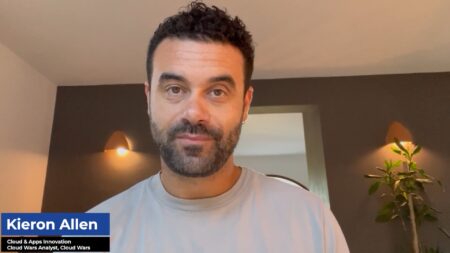In a recent discussion with my Acceleration Economy colleagues Bob Evans, John Siefert, and Scott Vaughan, we discussed the turbulence in the markets. While talk of inflation and a potential recession is everywhere, the great resignation continues and business leaders are wrestling with a still lingering pandemic and remote versus in-office workflow.
After the discussion, I found myself reflecting on the various leadership challenges I’ve faced in my career and how I and others have dealt with them. I decided that it was a good time to revise a post I wrote in 2020 about leading through tough times and some of the lessons I’ve learned from the experience.
Anyone who has been in a leadership position can remember when they had to lead through a crisis. For some of us, these “trials by fire” were formative in our understanding of leadership and in our careers. Four very challenging leadership experiences helped shape my leadership skills and style, and I actively use and teach these lessons learned in my day-to-day leadership and management.
Tough Experiences That Challenged Leaders
A rookie gets tested.
My first big management position was as an ad director at Ziff-Davis. Frankly, the job was way beyond my experience and I was incredibly fortunate to have been recruited and hired for the role. Luck played a part, too, as the market dynamics, company, and brand were poised to have a significant rebound after a rare down year — and that’s exactly what was happening.
On a beautiful October evening in the San Francisco Bay Area, as the Oakland A’s and the San Francisco Giants were preparing to play a World Series game at Candlestick Park, I was in a meeting in our offices not far from the ballpark. I remember thinking that it sounded like a loud train was approaching. At the same time, I knew there weren’t train tracks nearby.
As the magnitude 6.9 earthquake hit, a colleague and I tried to run out of the office but the floor was buckling so wildly that we couldn’t run or even stand up. We dove under desks and for the next 30 seconds were convinced that the building was going to come down on top of us. Thankfully, it didn’t.
A start-up CEO gets tested.
It was one of those perfect fall days in New York City. There were crystal clear skies and a slight chill in the air. I had a skip in my step at 8:40 am as I left Penn Station in NYC, walking down 8th avenue towards the Beliefnet offices on E. 23rd Street.
Shortly afterward, the first plane went into World Trade Center North. We stood in the street near our offices and watched both buildings fall. We closed our offices. Along with some 10,000 other New Yorkers, I walked across the 59th Street Bridge, towards my Long Island home. The town we lived in, Manhasset, New York, lost 75 souls that day.
A CEO learns about derivatives.
We had pulled off a remarkable transformation at UBM TechWeb. We took a disjointed series of live event, media, and data assets, and wove them into a coordinated, coherent operating strategy that delivered strong organic growth.
At an editorial advisory board meeting in the Napa Valley, two of our board members — one the CTO of a large financial institution and the other a financial analyst at a large bank — gave a talk on the pending financial crisis based on “derivative financial instruments.” Shortly thereafter, I and everyone else learned just what a derivative was and the incredible damage it would cause to the global economy.
A CEO learns about COVID-19 and how to pivot a company to work from home overnight.
At Thomasnet.com, the leading platform for industrial product sourcing and supplier evaluation, we started to see some odd trends in our sourcing data. In January of 2020, we started to see a sharp rise in PPE (Personal Protection Equipment) sourcing, much of it coming from China. My last business trip was in late February. By March of that year, we were all well aware of the COVID-19 Pandemic. On March 13th, a Friday no less, we shifted all 300 employees to fully remote work.
8 Lessons for Leaders
These were all “Black Swan” events — situations I had certainly never seen before and frankly had never even imagined. Each of these events tested me in ways I’d never been tested before. At times, each of them brought me to my knees. Fortunately, along with my colleagues, I was able to get back up by focusing on leading our business through these difficult times. Here are 8 lessons I learned along the way.
1. Focus on your “true north.”
During tough times, leaders often let go of strategies, processes, and systems and give in to fear. During a crisis, it’s incredibly difficult to stay focused on what is most important and use it as a framework to help you and your team manage through.
At Thomas, true north was our myopic focus on the customer experience we provided through our platform Thomasnet.com. When chaos reigns, it’s easy to get distracted. Stay focused on your true north; your customers, and the key elements of your business: People, Products, and Processes.
2. Communicate openly and often.
At first glance, this may sound simple. What actually happens during times of crisis is that leaders end up communicating less. Early on, leaders don’t have all the answers, which makes them reticent to communicate openly. Leaders must fight these instincts and communicate in one-to-many and one-to-one formats frequently and openly. Leaders need to focus on communicating with empathy and not be afraid of vulnerability.
In the first few weeks of the COVID-19 pandemic, communicating from our two-bedroom apartment on the Upper West Side of NYC, I found myself choking back tears when I’d address the company, groups, and individuals on our regular video calls. At times, I got embarrassed, but many people reached out privately to let me know that they shared the emotions and appreciated my passion and honesty.
A core aspect of successful communication is listening, something that I and many leaders struggle with at times. Make sure that you are setting up calls and meetings where you simply listen. Do not overreact or immediately try to fix things based on uncomfortable feedback or concerns you hear. Use regular surveys to check in on how your colleagues are feeling and get their take on how best to handle the challenges your company is facing.
3. Provide context and perspective.
There is an old joke that the last thing you want to hear from your doctor is “well, I’ve never seen this before.” A Black Swan event is just that. Something that you as a leader have never seen before.
At the same time, you have to ask yourself whether there are experiences you’ve had that might provide some context and perspective. This is the moment when you realize you either have the full benefit of 20 years of experience, or you’ve simply repeated the same year 20 times. As human beings, we are hard-wired to look for context and perspective. A leader takes on the responsibility to provide this for their colleagues, most acutely so during tough times.
4. Set the tone.
Leaders walk a tough and lonely road, trying to balance optimism and enthusiasm while also being open and transparent. As leaders, we are conditioned to believe we need to have all of the answers. Then, when faced with situations where that’s impossible, we can struggle.
In the first month of the pandemic, I worked on setting the tone by focusing our teams on our true north and using the data on our successful pivot to remote operations to highlight a crucial milestone. In our first week of working remotely, a group developed a COVID-19 Response Hub, bringing together suppliers who had the ability to shift manufacturing capacity to start producing critically needed PPE and medical equipment to fight the pandemic. Over the next 120 days, more than 6,000 companies registered to help, and the hub generated more than 1.4 million sourcing sessions, providing buyers access to critical sources of PPE and Medical equipment.
This gave our company not only an additional sense of purpose, but also the realization that by focusing on what we do best, we were helping to fight the pandemic. Our marketing teams made clear that as the leading platform for industrial sourcing and supplier selection, our prospects and customers needed us more than ever, which gave a boost of confidence to our sales teams. I also realized that during this critical time, I had to set the tone by communicating that we were simply not going to back down. We were not going to give in. We were going to double down on our efforts to serve customers and achieve, if not exceed, our original budgeted goals– even if, at times, I was not yet sure how.
5. Be visible.
Leaders can’t hide behind email or memos. Effective leadership, today, requires hands-on engagement and involvement. Leaders need to fight the instinct to be less visible during challenging times for fear they may get asked a question they can’t answer. Leadership during a time of crisis doesn’t mean you always need to give a speech or know the right thing to say.
The day after the 9/11 attacks, I rode the Long Island Railroad (LIRR) into NYC and came into our Beliefnet offices. I was one of three people who came into the office. But word spread that I came in, which gave people the sense that they, too, could come in and continue to serve our customers. During the pandemic, I’ve taken the opportunity to drop in on team meetings, schedule one-on-one catch-up calls with colleagues I don’t regularly get the chance to interact with, and attended virtual happy hours, team trivia nights, and other company get-togethers. At all of these, I’ve simply been present and visible.
6). Keep up company culture.
It is the unique chemistry of the people, shared values, and shared vision that make up a company culture. During difficult times, focus on your company culture. Celebrate it. Nurture it. Don’t lose sight of it.
In this era of remote-only work, we’ve found ways to keep culture thriving. From virtual happy hours to cooking and yoga classes to team trivia nights, and even a “spooky movie night” where colleagues gathered virtually to watch the same scary movie, we’ve not let the fact that we can’t get together in person diminish the power of our culture.
7. Redefine your new normal.
Leaders need to redefine what the new normal will look like coming out of the tough times. If layoffs will be necessary, be open about the process and use this difficult situation to reimagine your strategy, your organizational structure, how you engage and serve customers, and the long-term viability of your product portfolio.
If a very different office environment post-pandemic is likely for your company, as it is for many of us, then start that planning in earnest and engage your teams in the process. While it might be difficult to see, extraordinarily challenging times are also times of extraordinary opportunity. Do not give in to the instinct to simply retreat and cut back.
8. Accelerate your digital transformation.
The COVID-19 pandemic accelerated pre-existing trends, the largest one being the profound digital transformation of every industry in the world. Almost overnight, companies that have been making investments to digitally transform their businesses have been able to make relatively smooth transitions to remote operations. Those that haven’t are struggling.
For some companies and perhaps even entire industries, the pandemic will be an extinction event. This crisis has illuminated the fact that all businesses today need to be digital. Use this opportunity to clarify and accelerate your digital strategy. Double down on innovation with a renewed sense of urgency. The companies that continue to prioritize digital transformation can more easily manage through difficult times and will be in a strong position for accelerated growth as the global economy comes back online.
Final Thoughts
Regardless of the economic trends we’re seeing, these are challenging times to be a business leader. Technological advances are accelerating the pace of change, employee interests and needs are changing, and the ability to change jobs has never been easier. Whether you view any of these as a crisis or not, I hope you’ve found these eight lessons helpful and I look forward to hearing about the lessons you’re learning as you lead your business through challenging times.
Want more tech insights for the top execs? Visit the Leadership channel:










